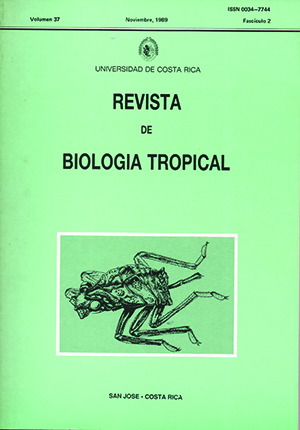Abstract
Se dan algunas evidencias de que Pentatrichomonas hominis, un protozoo intestinal cuya trasmisión no es fácilmente explicable, prescnta alguna {onna de resistencia Las pruebas indican que el parásito pudo ser aislado por cultivo de muestras tratadas con jugo gástrico natural hasta ¡x>r 120 horas o mantenidas en refrigeraci6n por 17 días. Puesto que los trofozoitos no pueden resistir tales condiciones, existe la posibilidad de un quiste O seudoquiste. Kcy words: PenJalrichomonas, intestinal flagellales, human parasites.
References
Brugerolle, G. 1973. Sur l'existence de vrais kystes chez les Trichomonadies intestinales. Ultrastructure des kystes de Trichomitus batrachorum. Perty 1852, Trichomitus sanguisugae. Alexeieff, 1911, et Monocercomonas tipulae Mackinnon 1910. C. R. Acad. Sci. Paris.
Camp, R.R., C.F.T. Mattern & B.M. Honigberg. 1974. Study of Dientamoeba fragilis Jepps & Dofell. I. Electromicroscopic observations of the binucleate stages. II. Taxonomic position and revision of the genus. J. Protozool. 21: 69-82.
Chinchilla, M., E. Portilla, O.M. Guerrero & R. Marín. 1987 Presencia de quistes en Tritrichomonas muris. Rev. Biol. Trop. 35,21·24.
Mattern, E.F.T. & W.A. Daniel 1980. Tritrichomonas muris in the hamster: pseudocysts and the infection of newborn. J. Protozool. 27:435-439.
Yang, J. & T.H. Scholten: 1977. Dientamoeba fragilis: a review with notes on its epidemiology, pathogenicity, mode of transmission, and diagnosis. Am. J. Trop. Med. Hyg. 26:16-22.
Comments

This work is licensed under a Creative Commons Attribution 4.0 International License.
Copyright (c) 1989 Revista de Biología Tropical


